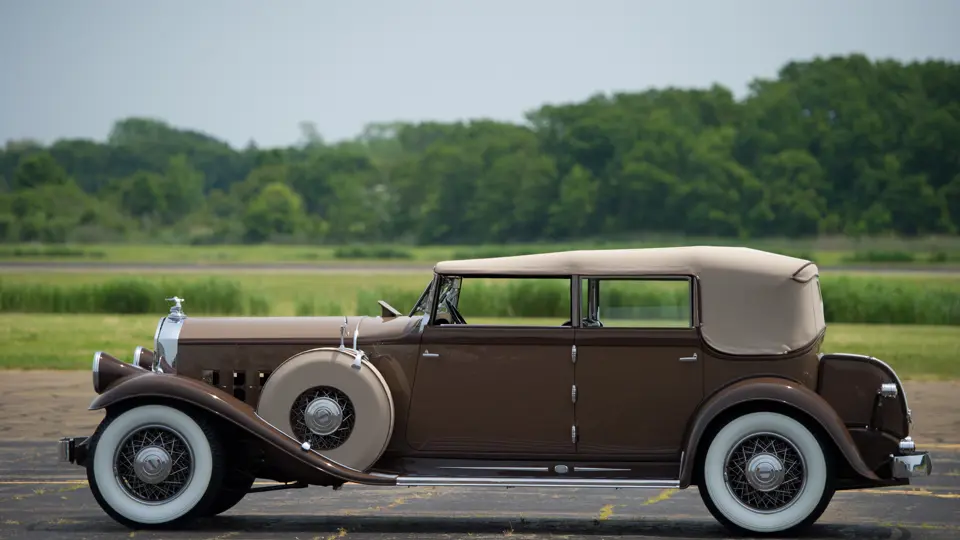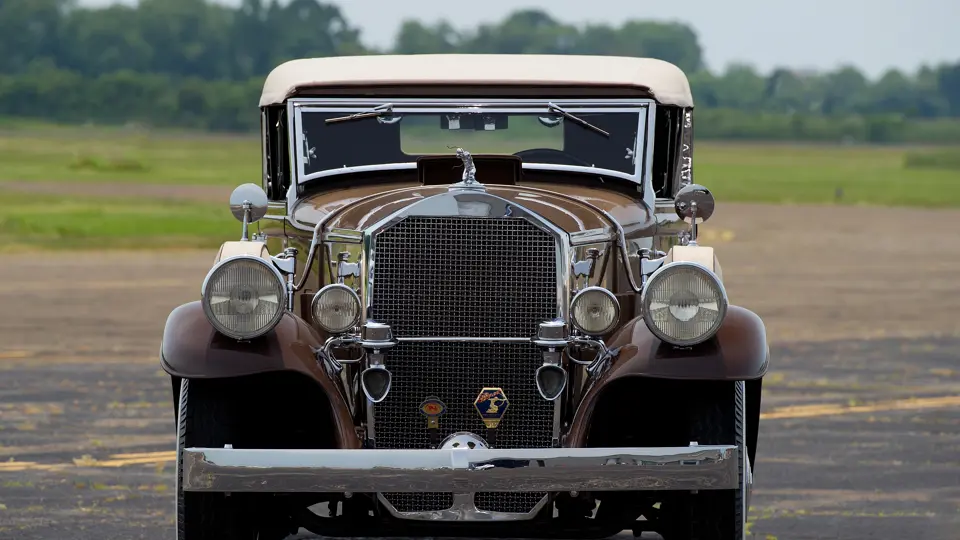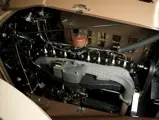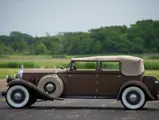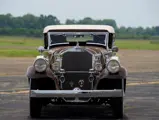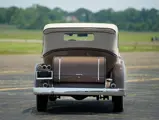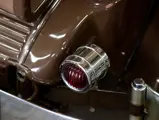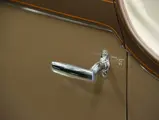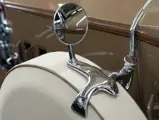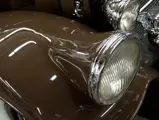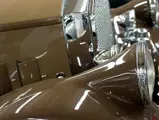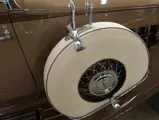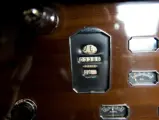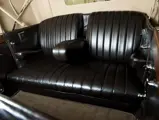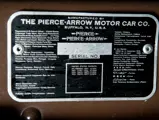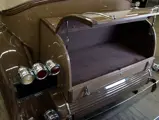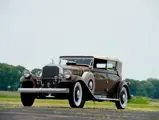132 hp, 385 cubic inch straight eight-cylinder engine, two-barrel updraft Stromberg carburetor, four-speed manual transmission, with freewheeling, front and rear semi-elliptic leaf springs, rear live axle, four-wheel mechanical drum brakes. Wheelbase: 147"
- One of only four Pierce-Arrow LeBaron convertible sedans sold in 1931
- Part of the Browning Collection from 1972 to 2000
- Restored in early 1990s, Pebble Beach award winner in 2001
- Driven 2000 trouble-free miles in recent years
Packard, Peerless and Pierce-Arrow – “the three P’s” – were names to conjure with at the dawn of American motoring in the early 1900s. Yet by the late 1930s, only Packard would remain. Peerless failed in 1931, while Pierce-Arrow merged with Studebaker in 1928 and held off the Depression with massive, upper-class carriages through 1938, when the receivers were called in. But like certain species of plants, its late blooms were the most impressive. Though few were built, most survive.
For such a profoundly serious enterprise, Pierce-Arrow began in a charmingly eccentric way, making birdcages in Buffalo, New York in 1865. Then known as Heinz, Pierce and Munschauer, the firm dallied with iceboxes and kitchen items until the middle partner George Pierce bought out the other two members in 1872. Pierce diversified into bicycles in 1896, at which point treasurer Charles Clifton joined the company and suggested building a steam car. One was completed in 1900, but it didn’t work. However, Clifton redeemed himself by recommending the company buy the French De Dion motor, and it powered the first Pierce Motorette later that year.
British-born engineer David Fergusson joined Pierce in 1901 and would stay with the company for 20 years. He developed the four-cylinder Great Arrow in 1904, which won the Glidden Tour of 1905, driven by Pierce’s son Percy. Fergusson also designed the company’s first six-cylinder engine in 1907. The company became Pierce-Arrow in 1909 and sold its 12,000th car in 1915, with a comfortable niche among the very wealthy.
But like Orson Welles’ family in The Magnificent Ambersons, Pierce-Arrow clung to its traditions. The cars had a steering wheel-mounted shift lever until 1908, and were only offered in right-hand drive until 1920. They persisted in “frog-eye” fender headlights (though drum headlights were optional until 1932) until the rest of the world caught up with them in the late 1930s, and the company was proved right, just as it failed.
By the 1920s, time and technology was marching on. Packard had its Twin Six V-12 engine, Cadillac had a V-8, but Pierce-Arrow insisted that six cylinders was enough. Even if the engine was a whopping 824.7 cubic inches – like the 1918 Model 66A – there was a certain lack of refinement, and buyers were turning to other marques, as there were no medium-priced Pierce-Arrows.
Luckily, Albert Erskine of Studebaker was looking for a prestige line, and Pierce-Arrow was acquired in 1928 through a stock transfer. If 90 percent of Pierce-Arrow stockholders would agree to the merger and sell their stock to Studebaker, Studebaker would invest $2 million in Pierce-Arrow. After some arm-twisting the stockholders agreed. It turned out to be a good arrangement for both companies: Studebaker got a luxury line and Pierce-Arrow gained nationwide distribution.
A new straight-eight engine was green-lighted, boxy coachwork smartened up, and the 1929 Pierce-Arrow went from drawing board to production line in six months. The net result was a doubling of sales to 9,840, the company’s best year ever. Even the stock market crash didn’t hurt much at first, with 6,916 cars sold in 1930.
The year 1931 was the third of the Studebaker/Pierce-Arrow combine, and the companies performed well together. The top-of-the-line Model 41 rode on an enormous 147-inch wheelbase, as big as the Pierce-Arrows from the teens, and Studebaker found a canny way to offer “quick-delivery” customs by contracting with the LeBaron Coachworks. LeBaron would build five bodies including a convertible sedan, a convertible victoria, a coupe, a limousine and a club sedan. They’d be finished in primer “in the white,” and a customer would come to a Pierce-Arrow showroom and place the order there, choosing paint, trim and accessories. Pierce-Arrow would direct the coachbuilder, and a finished car would materialize at the dealership, with much fanfare.
The system worked well until the Depression caught up with the industry. These cars are some of the handsomest of the decade. They can be recognized by their single bar bumpers, a deeper radiator shell, more brightwork (300 pieces of stainless steel fitments in some cases) and the new “bareheaded” archer hood ornament, arguably the most handsome ever designed. It was actually produced by General Motors’ Terstedt Division. William Schnell was the artistic director responsible for the design, and his name can be found on the base of all the original archers.
Highly regarded for their finish and silky smooth in operation, the straight-eight engines were dynamically balanced, dynamometer tested and then stereoscopically analyzed for unwelcome noises. Freewheeling was a new innovation in 1931, and all the Pierce-Arrow transmissions gained the feature, for silence and economy.
The car on offer is an excellent example of perhaps the most handsome and functional LeBaron body, the convertible sedan. One of 33 built over three years and the oldest known of only four sold in 1931, it was purchased by the Browning Collection from James Weston of San Francisco in 1972 and thoroughly restored in the 1990s in its colors of light and dark brown with orange pinstriping. It remains in sparkling condition, evidence that an excellent restoration has enduring value. The paint, interior and chassis are brilliant and very well presented, despite the 10 years since restoration. As the car has never been used for touring, it remains in show-quality condition. Bought from the Browning Estate in 2000, it was shown at Pebble Beach in 2001 and won a class award.
As might be expected, this car is well-equipped, starting with the superb kneeling archer hood ornament. It features a metal trunk, designed just for this model, twin side-mount spares with contoured mirrors, Tilt-Ray headlamps, dual running lights, dual horns and an Arrowlite taillight. Inside, the rich leather seats are adjustable, and there are footrests for the rear passengers.
The reputation of the Browning Collection is one of fastidious maintenance and repair, which was born out when the next owner reported two thousand miles of absolutely trouble-free driving. Since then, this Pierce-Arrow has been thoroughly detailed and positively glows beneath a light patina. This handsome convertible sedan will undoubtedly reward its new owner with admiring glances at the next significant concours d’elegance it attends.




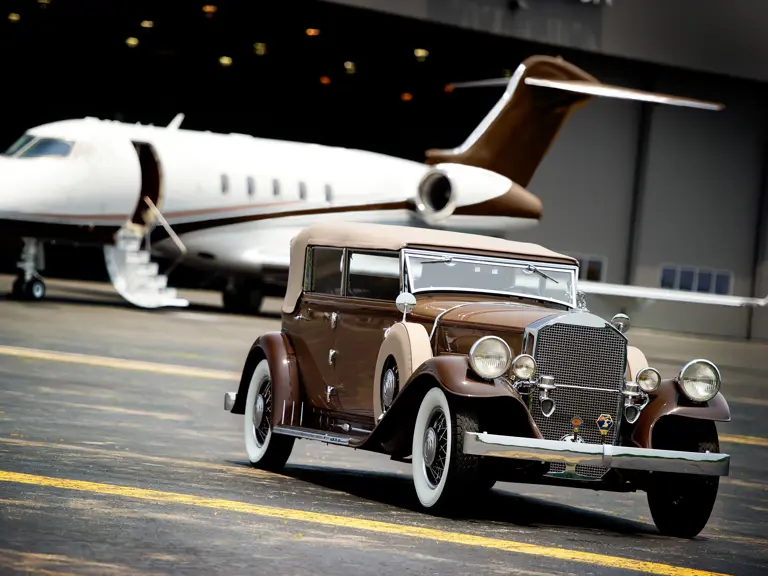
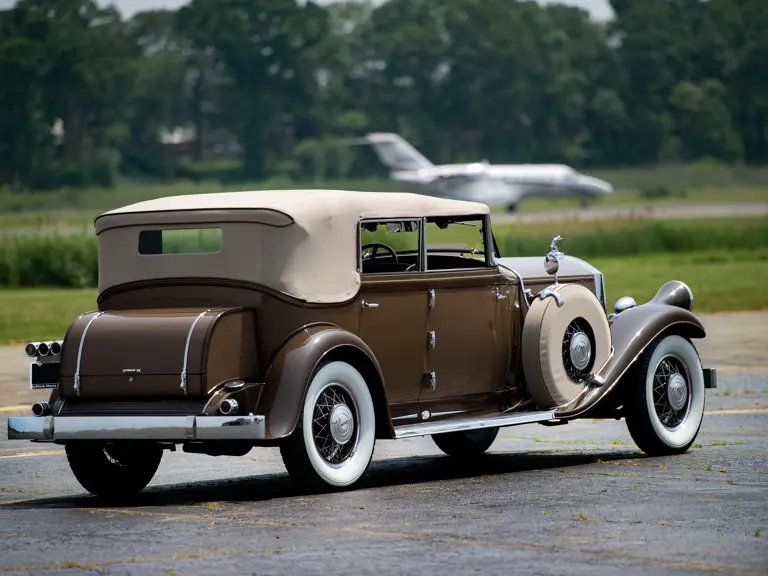
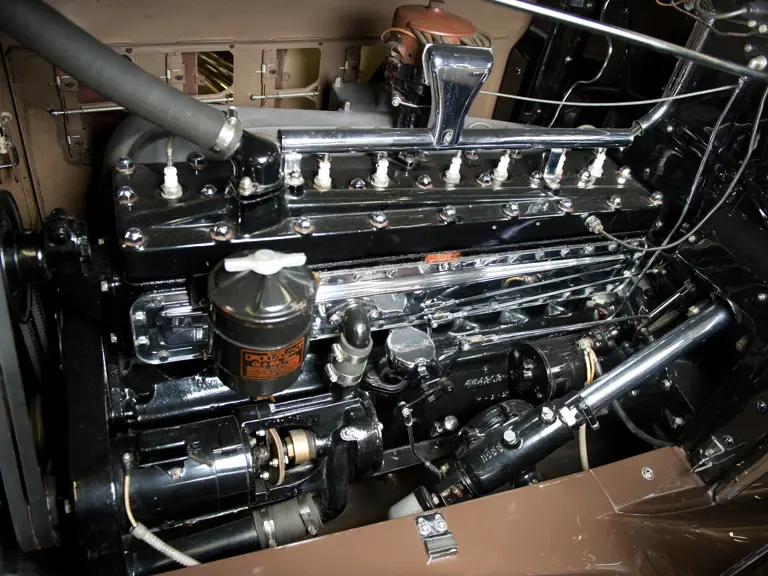
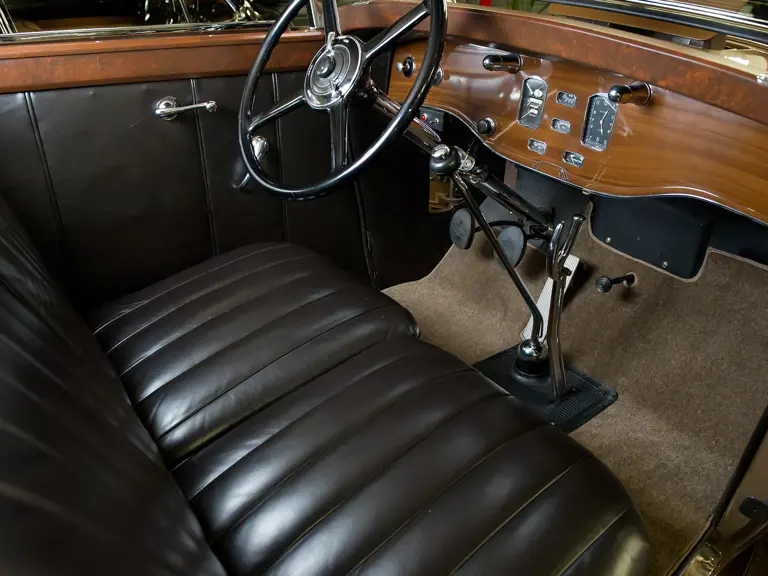
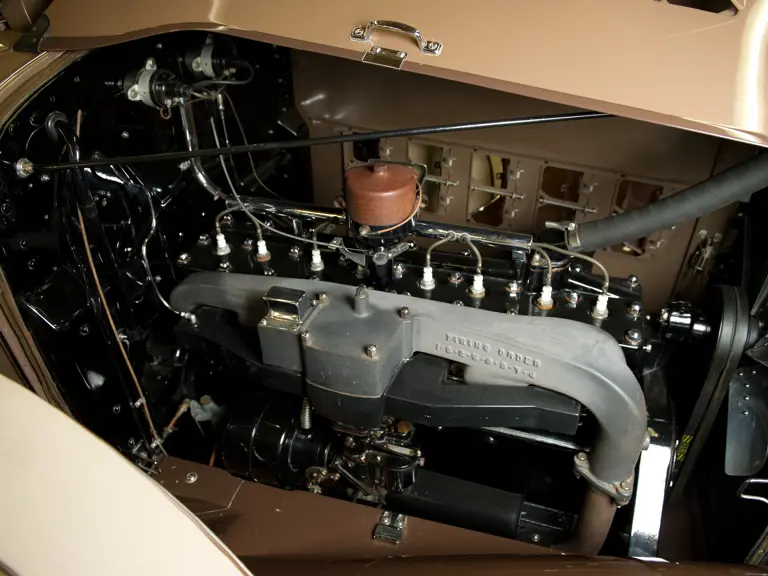
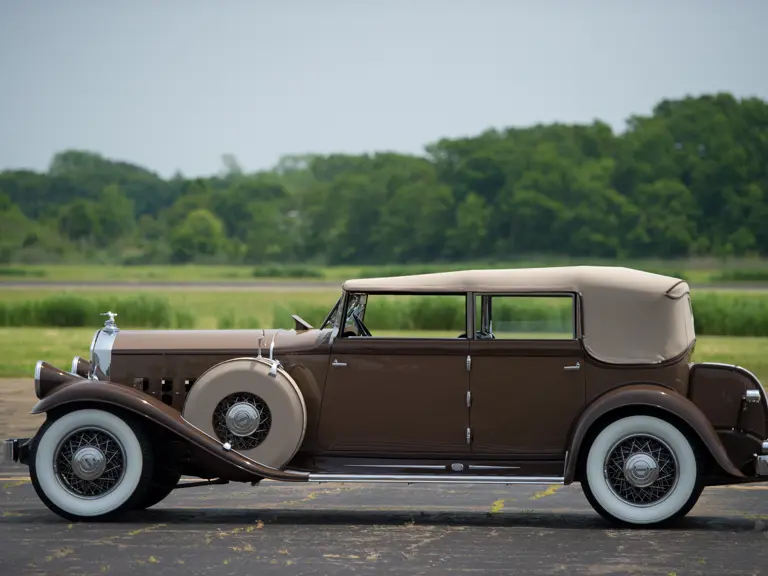
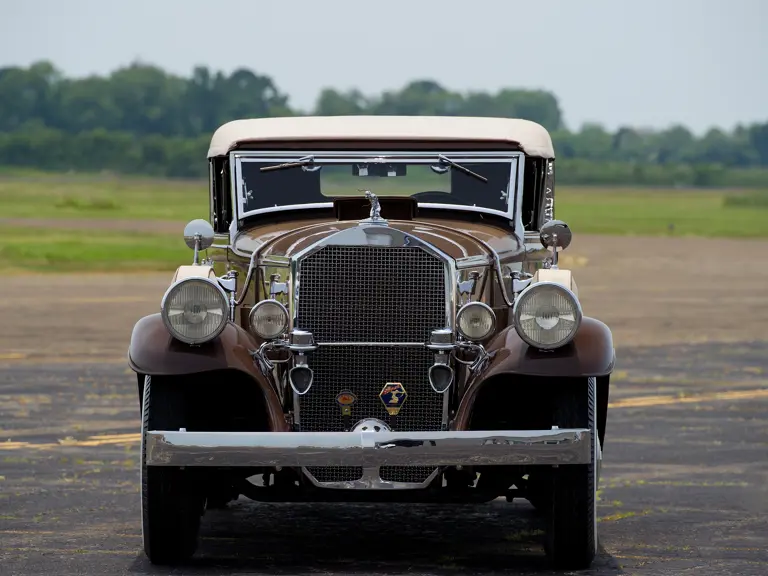
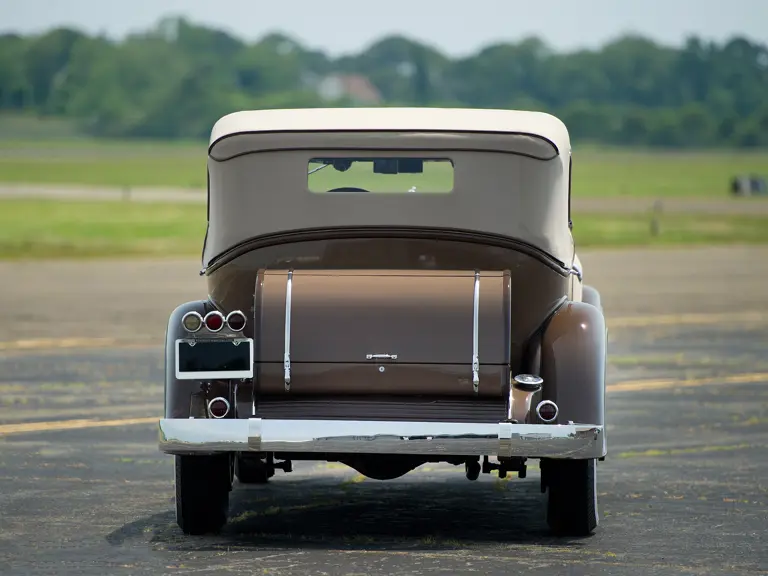

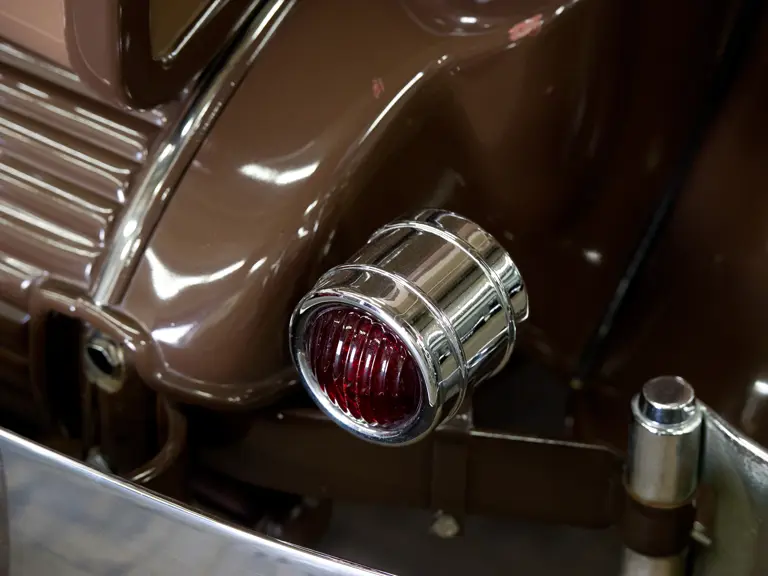

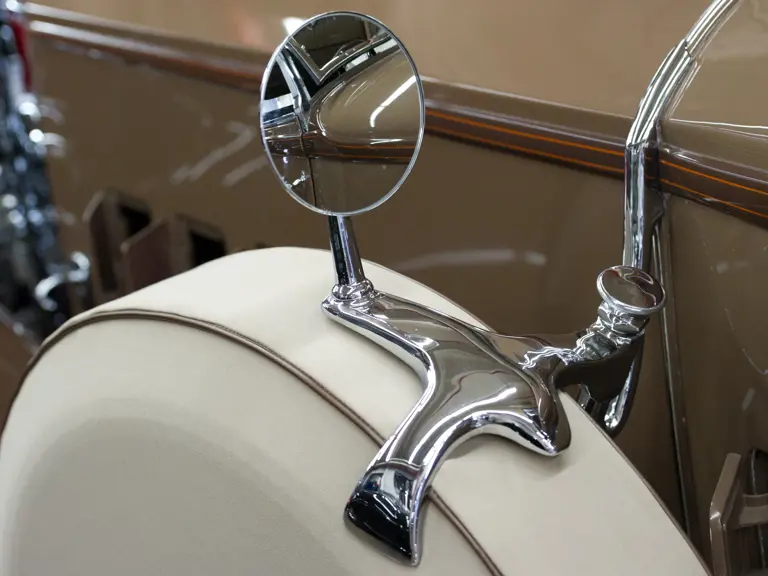
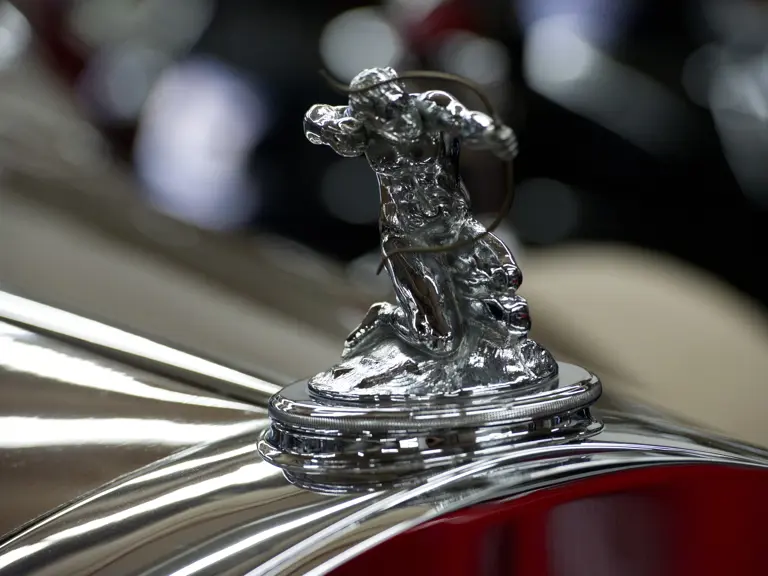
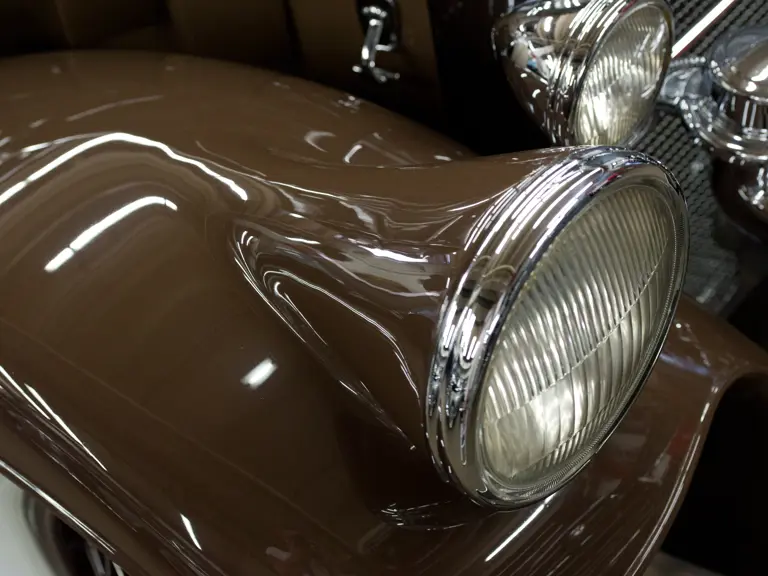

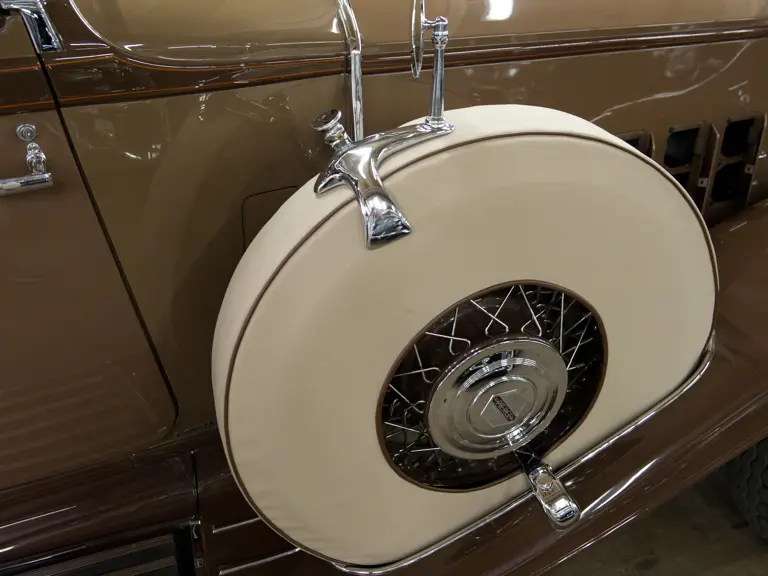


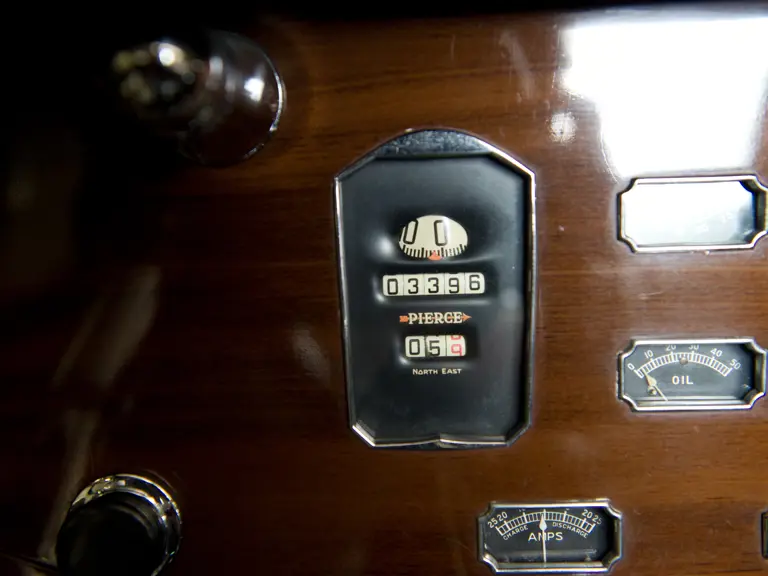
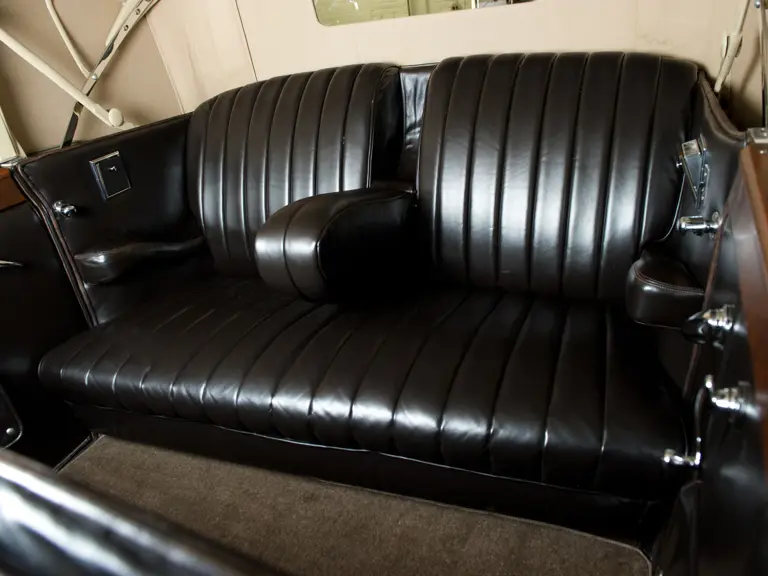
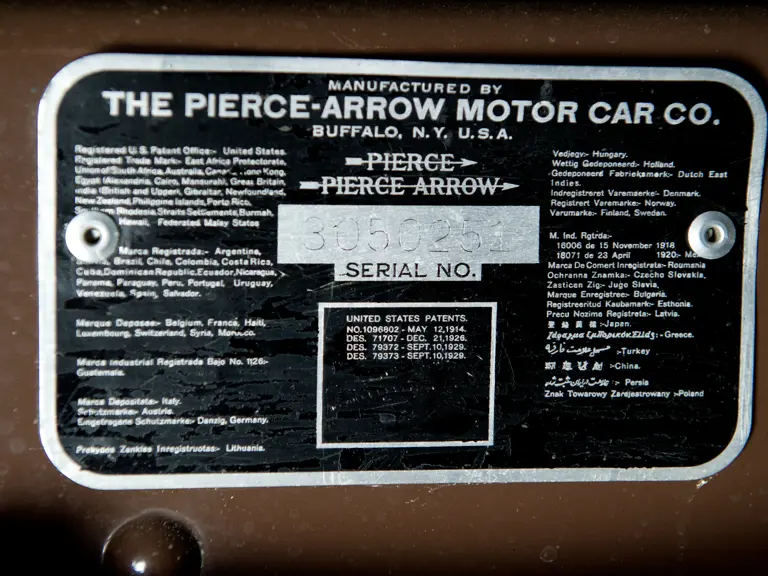
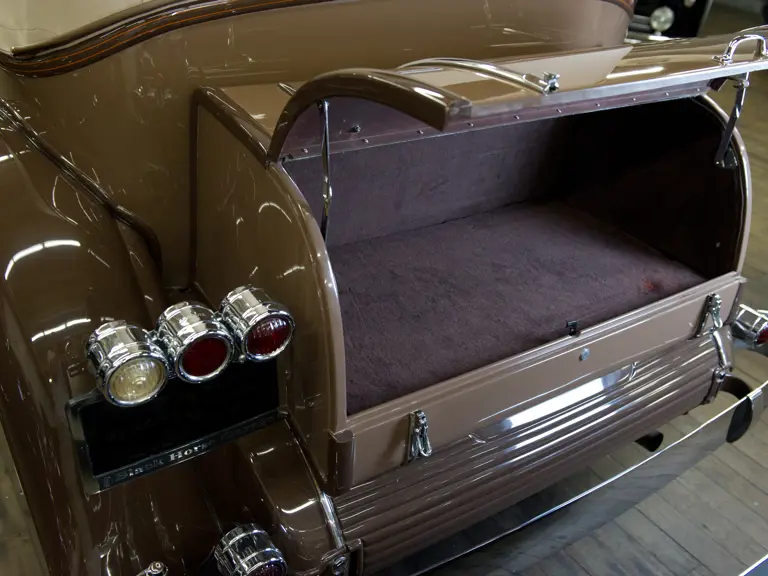
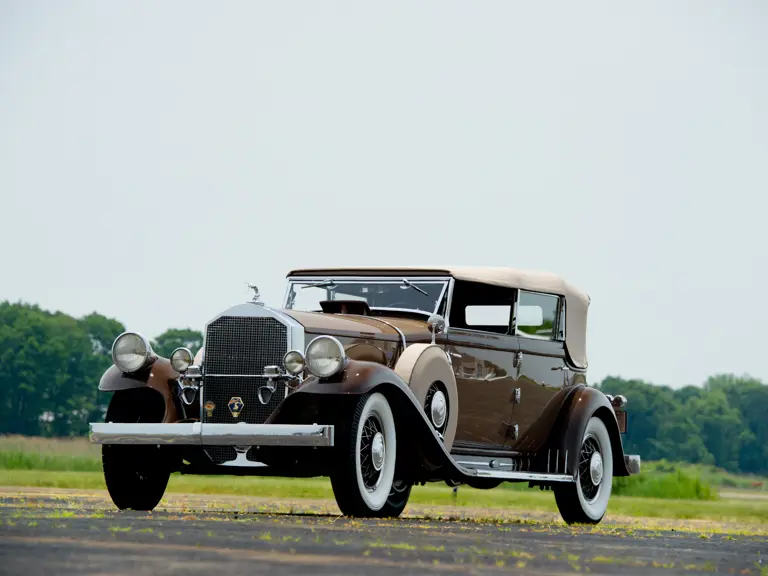

 | Monterey, California
| Monterey, California

